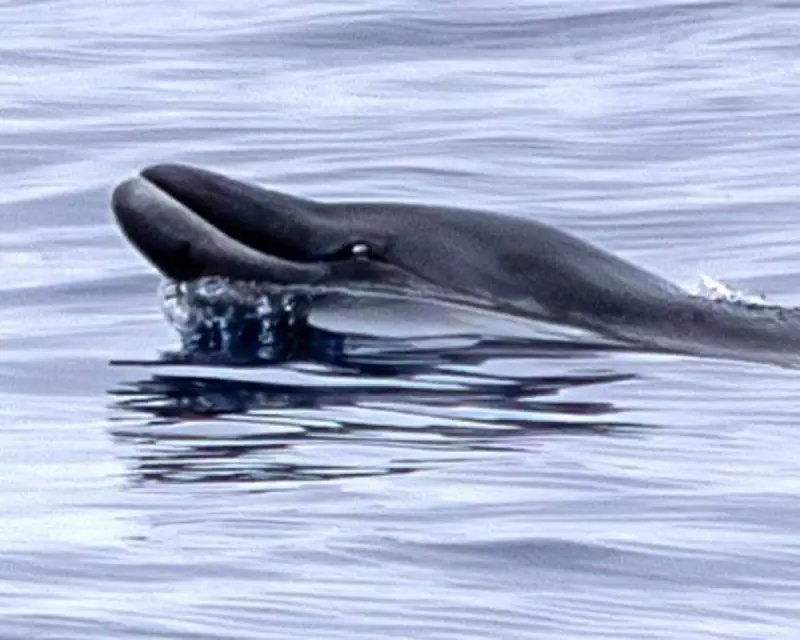
In a landmark moment for marine biology, a team of researchers has recorded the first-ever confirmed sighting of the elusive ginkgo-toothed beaked whale in the wild. This species was previously known to science only from a handful of dead specimens that had washed ashore, making this live encounter a monumental breakthrough.
A Five-Year Quest Culminates in Discovery
The historic sighting occurred in June 2024 off the coast of Baja California, Mexico. Aboard the research vessel Pacific Storm, scientists were concluding their morning preparations when a cry from the bridge—“Whales! Starboard side!”—signalled the beginning of the encounter. For several hours, the team observed what appeared to be two juvenile beaked whales repeatedly surfacing.
The crucial moment came when Robert Pitman, a now-retired researcher from Oregon State University, used a modified crossbow to fire a small arrow at one whale. The tip collected a tiny skin sample, no larger than a pencil eraser. This biopsy would later provide the definitive proof that the team was looking at a ginkgo-toothed beaked whale.
“I can’t even describe the feeling because it was something that we had worked towards for so long,” said Elizabeth Henderson, a researcher at the US Naval Information Warfare Center and lead author of the subsequent paper in Marine Mammal Science. “Everybody on the boat was cheering because we had it, we finally had it.”
The Technological Edge and a Thieving Albatross
This discovery was the culmination of a five-year search that began in 2020. The team, comprising researchers from Mexico and the US, had been tracking a unique underwater call, designated BW43. They initially believed it belonged to Perrin’s beaked whale, another species never seen alive.
After years of unsuccessful attempts on smaller vessels, partnering with Oregon State University proved pivotal. The Pacific Storm was equipped with advanced technology, including an array of hydrophones to listen for whale calls and an observation deck with high-powered binoculars. Such tools are essential for locating beaked whales, which are the deepest-diving mammals on Earth and notoriously shy.
The moment of triumph was nearly stolen, however, by an opportunistic albatross. As the scientists retrieved the precious biopsy arrow from the water, the seabird swooped in and began pecking at it. “In hindsight, it is very funny, but in the moment it was very stressful,” Henderson recalled. The crew shouted and threw bread rolls to distract the feathered thief, successfully securing the vital sample.
Implications for Conservation and Future Research
The finding has significant implications. Beaked whales are highly sensitive to military sonar, which can disrupt their foraging and cause fatal decompression sickness. Identifying their habitats is crucial for mitigating these threats by avoiding naval exercises in key areas.
Furthermore, the discovery reshapes the understood distribution of the species. While strandings had primarily been recorded in Japan, acoustic analysis of the BW43 call confirms these whales likely reside year-round off the shores of California and northern Baja California.
This breakthrough highlights the importance of acoustic research. With many beaked whale calls recorded but not yet matched to a species, scientists can now use this data to build distribution maps for these enigmatic creatures, paving the way for further discoveries about the least-known large animals on the planet.





